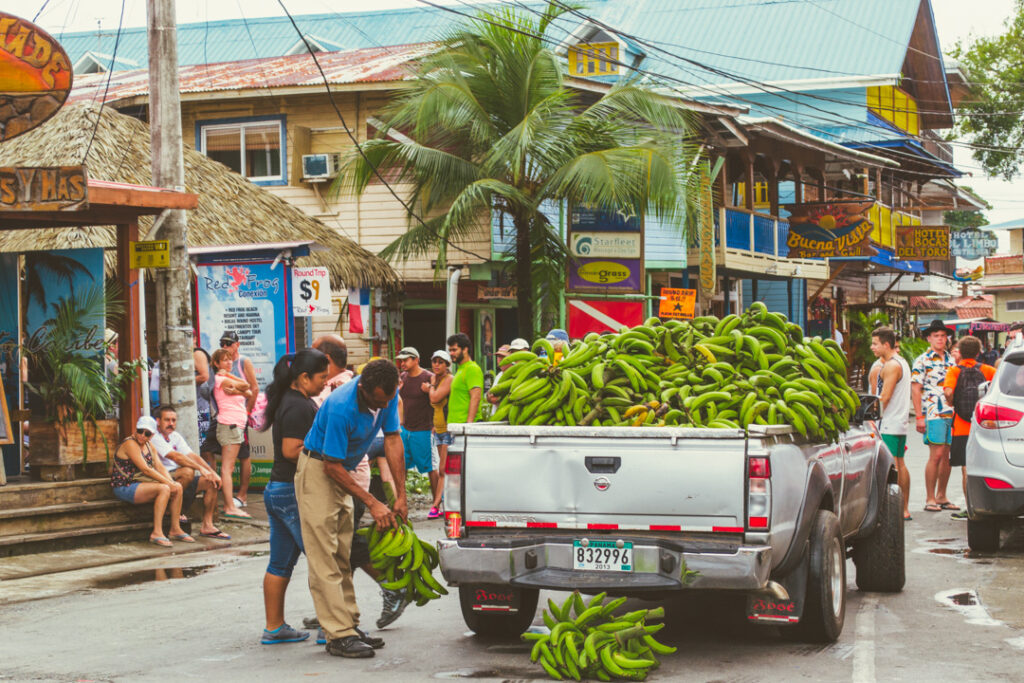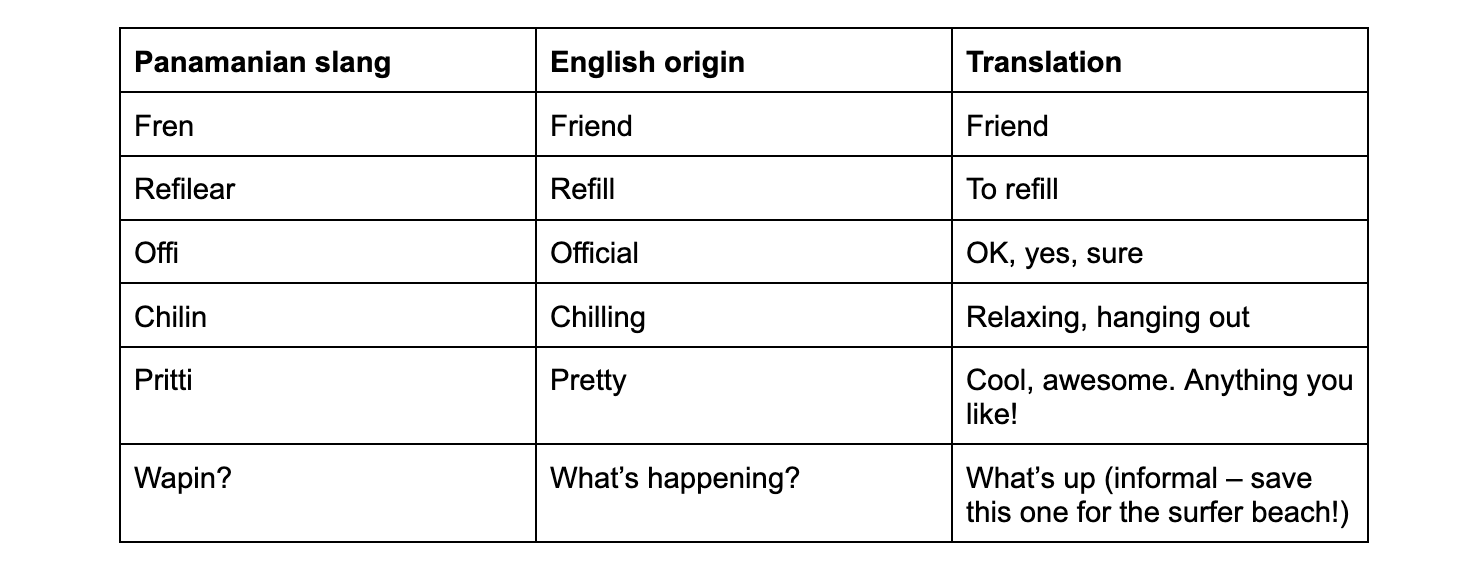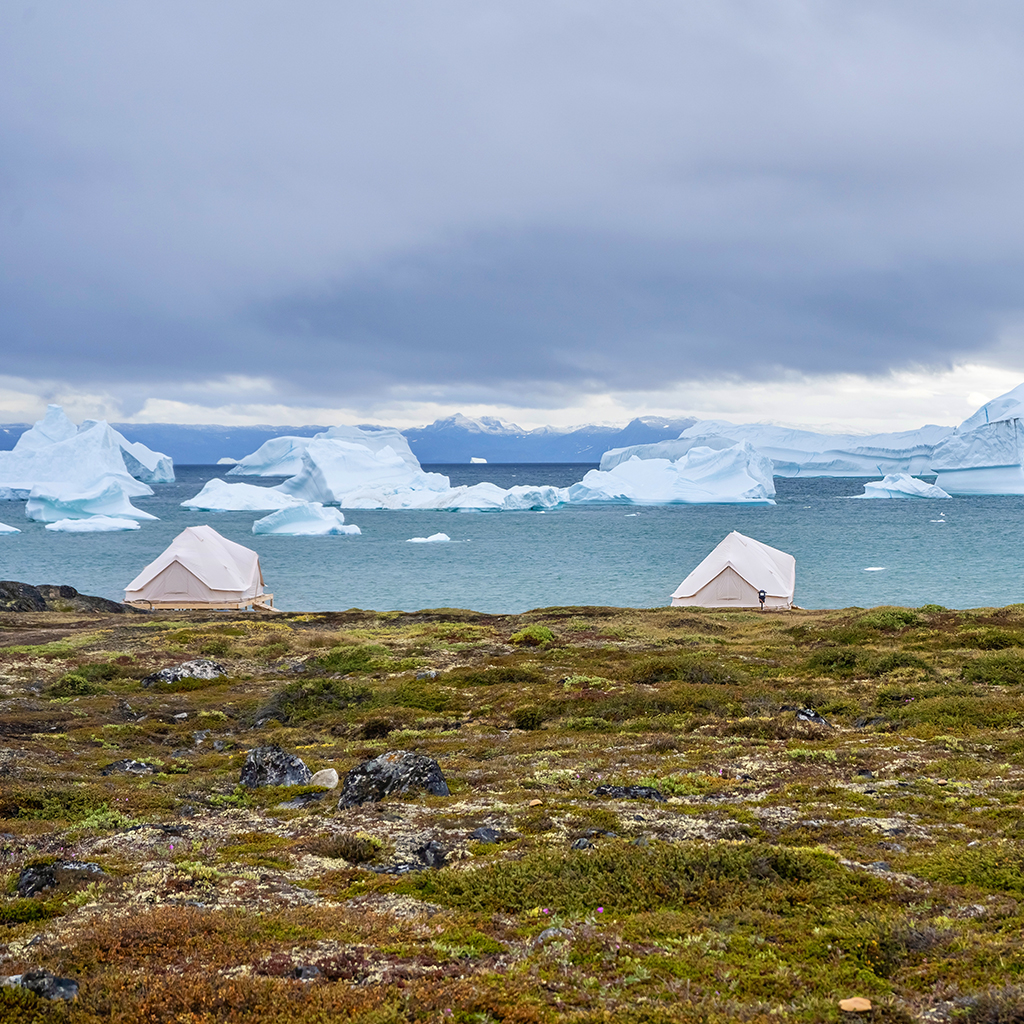
Bridging the gap between North and South America, Panama has a language that’s almost as colorful as its diverse landscapes and people!
Before you pop open your favorite language learning app or dust off your notes from school, read on for the scoop on what makes this flavor of Spanish so unique… from English words that need (almost) no translation to essential Panamanian slang (including the secret meaning of “rice with mango”).
But first, let’s start with the not-so-obvious answer to an obvious question.
What languages do they speak in Panama?
Panama’s official language is Spanish. As a traveler, this is definitely the language to focus on if you want to stay in the loop – about 95% of Panamanians speak it.
But between Panama’s diverse pre-Columbian heritage and modern fusion of European, Africa, Caribbean cultures against a backdrop of global trade (hello, Panama canal) Spanish is far from the only language you’ll hear. As you make your way from the globalized bustle of Panama City to far-flung outposts on islands or deep in the jungle, keep your ears perked!
Languages spoken in Panama apart from Spanish include these regional languages, which long predate European colonization:
- Ngäbere: Also called Guaymí, this language is spoken by the indigenous Ngäbe people, Panama’s most populous indigenous people. It’s also spoken in neighboring Costa Rica.
- Buglere: The closest related language to Ngäbere, spoken by the Bokota people.
- Bribri: Though most Bribri speakers today live in Costa Rica, a small minority remain in Panama.
- Emberá: Also known as Chocó, this range of related dialects is spoken in neighboring Colombia and southern Panama.
- Wounaan: Part of the same language family as Emberá, with speakers in a similar geographic area.
- Kuna: Spoken in the San Blas islands of Southern Panama and northern Colombia.
- Teribe: Spoken by the Naso people in the Bocas del Toro province.
Panama is also home to Caribbean and Afro-Panamanian populations, who bring creole languages like Guari-Guari and Palenque to the mix!
Finally, as an English speaker, you’ll notice that some Panamanian terms sound oddly familiar. For instance, “troca” means (you guessed it!) truck. That’s no coincidence – many of these words are borrowed from English.
Panamanian Spanish accents
If you ask five different people what a Panamanian Spanish accent sounds like, you’ll get five different answers.
Some compare it to Venezuelan, others to Colombian, Costa Rican, or even Cuban. Why so many differing opinions? Just look at a map! Panama’s long, skinny shape and position as the bridge between North and South America, not to mention its proximity to Caribbean islands, means there are a lot of cultural influences and small differences in regional accents!
If you’re a native English speaker who learned Spanish in school, though, you probably won’t notice most of these differences.
Here are a couple things you probably will notice about Panamanian Spanish accents, though, especially if you’re used to dialects from Mexico and Spain.
- “S” sounds like “h.” For example, “está” sounds like “eh-tá.”
- “D” sounds are minimal or silent, especially between vowels or at the end of words. For example, “pedido” becomes “pe’i’o.”
- “Ch” sounds like “sh.” For example, “chopear” is pronounced “shopear.” (Can you guess what English word this uniquely Panamanian verb is borrowed from?)
7 Must-Know Panamanian phrases & words
Getting ready to practice your Spanish with locals in Panama? Master these Panamanian slang phrases to make the most of casual conversation and have a bit of fun!
1- “Qué xopá?” – What’s up?
This funky Panamanian slang phrase is actually a flip-flopped version of “qué pasó,” – which literally means “what happened?”
Flip the “pa” and the “so” and you get “xopá” (“x” sounds like “s” in Spanish!).
Don’t forget to stress the second syllable, otherwise you’ll accidentally inquire about soup (“sopa”) which will probably make you seem a little less in the loop.
2- “Dale, pués,” – Go for it!
Literally “give it, then.” Use this Panamanian phrase to encourage someone, give permission, or just show that you agree!
3- “Cuéntame la cocoa” – Spill the tea!
Literally “tell me the cocoa,” this phrase is your ticket to getting all the latest delicious gossip from any Panamanian (ok, no guarantees, but this IS how you ask!).
4- “Estoy tirado/a” – I’m tired
“Tirado” literally means “shot.” Bonus authenticity points for remembering to gloss over the “d” sound (“estoy tira’a”).
5- “Ayala vida!” – OMG!
Keep this Panamanian slang phrase in your pocket for when something surprises you or you find out something new.
“Ayala vida! No lo sabia!” = OMG, I didn’t know that!
6- “Se formó un arroz con mango” – A fight broke out
“Rice and mango” isn’t always as sweet as it sounds!
An “arroz con mango” can be a fight, a bad situation, or something confusing and complex.
7- “Parquear” – To hang out
A verb borrowed from the English word “park,” but we’re not talking about cars here!
We know… confusing! For help remembering, think about how you park yourself on a friend’s couch for an evening of catching up over a glass of wine.
BONUS! “Un parkin” means “a party.”
English speaker’s cheat sheet! More English-turned-Panamanian slang terms
Not all the Panamanian phrases that come from English are as confusing as parquear. Here are terms that mean exactly what you think!

Wish you were chilin in colorful Panama right about now?
From the bustling streets of Panama City to your off-the-grid home base in Bocas Del Toro, the Panama Yoga Adventure is the perfect excuse to practice your new vocab.
Dalé, pues! Just click the link below for all the cocoa on this adventurous and wellness-packed itinerary.

